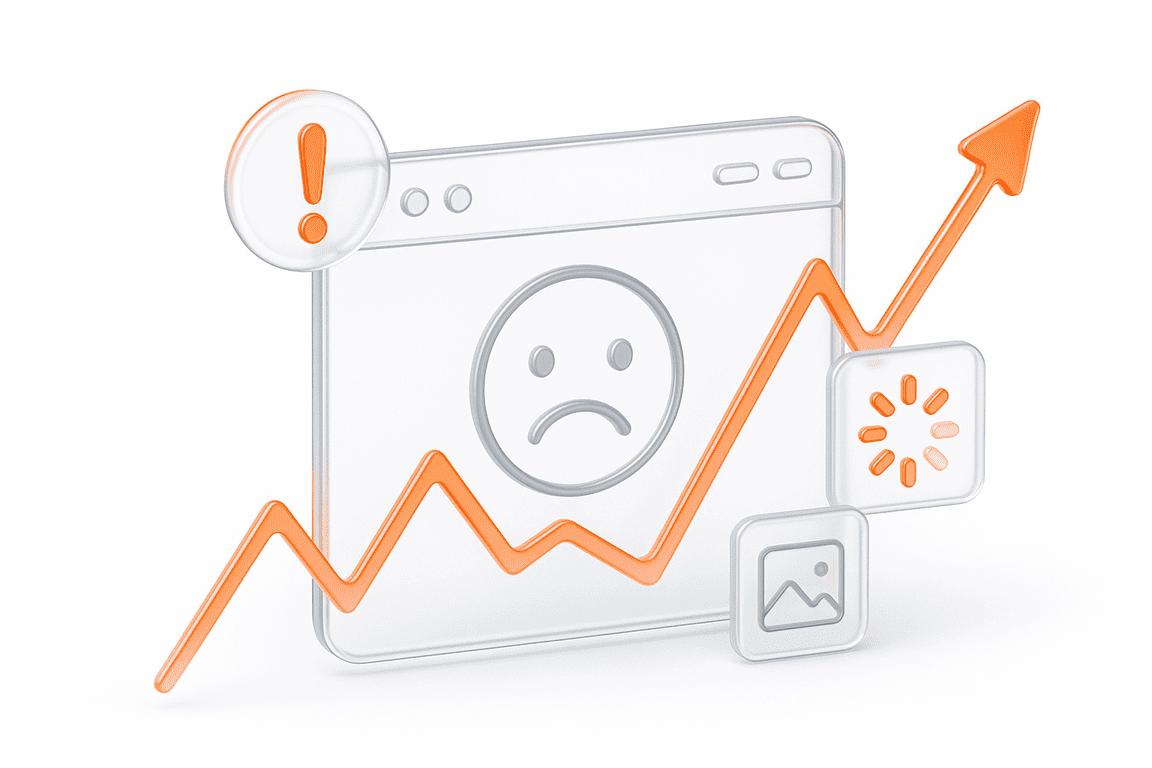Over time, mobile devices are becoming increasingly common. They have become an essential part of our daily lives and have helped us speed up digital transformation initiatives. As of Q2 of 2020, people have downloaded 37.8 billion mobile apps on Apple and Google app stores.
With the world shifting towards remote infrastructures and IoT networks, we can expect them to play an even greater role. That said, mobile applications are only worth their value if they deliver all features the user needs. In a highly competitive market, mobile app developers must create error-free mobile software and meet all usability, security, and quality requirements.
Mobile testing helps developers find and solve bugs ranging from identifying issues with signup forms and glitches in navigation to preventing breaks in payment processing misalignment of design elements. It ensures that even small changes don’t affect the user experience across different devices.
However, as the diversity between mobile devices continues to increase, testing apps across different devices, browsers, operating systems, and hardware configuration is becoming harder. In this article, we will mobile testing on real devices vs. emulators vs. simulators.
Types of Mobile Testing Device Solutions
As technology continues to evolve, we see many changes in mobile testing device solutions. New changes usually evolve from the need for testing mobile apps on different mobile devices and cross browser testing. Testers need to evaluate differences in mobile behavior from analyzing the application’s functionality and UI aspects.
Mobile testing device solutions enable us to test the consistency of behavior of websites and apps on different mobile devices. Because most mobile devices have a variety of operating systems, screen resolution, and hardware configuration, applications don’t work the same for all devices.
This is why mobile testers use two different types of mobile testing device solution to evaluate their applications. These devices are namely, real devices and virtual devices.
What Is a Real Device?
As the name suggests, real testing devices are the different models of mobile handsets that run the mobile app or web app. They are actual devices testers use to test how an application behaves. In most cases, testing teams acquire two or more devices from Android, iOS, Blackberry, tablets and iPads each.
This rich range of devices gives greater functionality to mobile applications, but this also makes testing much more complex. Testers must consider technical characteristics of every mobile device and see how different models affect the app’s behavior.
Also, these devices have a greater variety of screen sizes. QA teams must examine different mobile screen dimensions and ensure that the app is easy to use and all key fields are visible.
What is a Virtual Testing Device?
Virtual Testing Devices are different because they are software replications of real devices, instead of actual devices. This allows testers to simulate the testing environment of a particular model or mobile company.
Virtual testing devices mimic real devices and thus, help you ensure that all features in an app work well. Although virtual testing devices are cost-efficient, they don’t provide us the same level of accuracy and reliability as real devices. Virtual devices are usually divided into two different types:
Emulators
Emulators are software that mirror both software and hardware configurations of a particular device. They translate Instruction Set Architecture (ISA) of your mobile device to suit your computer’s ISA, making binary translation easier for your machine.
ISA is a unique set of instructions written in Machine Language. Each type of processor has a different instruction set that helps devices to build their own configuration. These configurations mirror the device’s behavior and functionality.
Translating the Instruction Set Architecture of mobile devices into your computer can help you create a reliable virtual environment for testing. That said, developing near-native capabilities for mobile devices comes at the cost of latency.
This happens because the virtual device has to render complex features such as geolocation, motion sensors, etc. Emulators consume a considerable amount of your computing power.
One of the most best emulators used by QA testers are Galaxy emulator, Android emulator, and iPhone emulator. That said, the iPhone emulator is actually a misnomer for iOS Simulator.
Simulators
Simulators are software specifically built for different Operating Systems. The majority of simulators are developed for iPad and iPhone devices, since they are not as easy to emulate as Android devices.
iOS simulators work in top of the computer’s Operating System, mimic iOS and run the particular app inside that environment. However, these simulators must be used on macOS only, because these applications require Apple’s native Cocoa API. Cocoa API is mandatory for rendering the GUI, runtime and other operations.
This limits the number of machines developers can use to test mobile applications. Testers must use MacBooks or run macOS on a virtual machine on their systems. Simulators are different from emulators because they don’t mimic hardware. As a result, testing functionalities such as cellular interrupts, battery usage, motion sensors, etc., isn’t possible when using simulators.
Emulators vs. Simulators in Mobile Testing
Although emulators and simulators are meant to perform similar task, there are some fundamental differences between them. Simulators are only meant to mimic the traditional internal behavior of devices, not the hardware. However, the trade-off is fine for testers who don’t need to test app performance accurately under perfect conditions in an ideal environment.
On the other hand, emulators replicate the entire experience of devices. This means they can represent the all of the real device’s functionalities. Simulators fall short to emulators in this respect. Despite that, simulators perform better compared to emulators in some cases.
If you are a tester who wants a virtual device for simple application’s testing, simulators are more than sufficient. For instance, applications with basic feature requirements such as calculation don’t require complex testing environments, so simulators are ideal for them.
In a similar case, an emulator will be an overkill. Emulators are ideal for applications that use extensive hardware and software features of the real device. For instance, applications like Snapchat use advanced features, including geo-location, sound systems, camera, and other memory intensive features. Emulators provide a comprehensive environment for such apps.
In contrast, a simulator lacks hardware functionalities, Therefore, it will fail to show you how advanced features like geo-location, sound systems, camera, etc., actually work on the device. At best, it will show how basic features of Snapchat work, making I difficult to identify and debug technical faults.
Additionally, emulators are easier to debug. Emulators point out where errors are generating in an application. This happens because emulators are designed by the manufacturers itself. Google offers an official Software Development Kit (SDK) for Android.
Emulators are designed through machine assembly language, whereas, we code simulators in high-level languages. That said, emulators’ are extremely slow and fail to match the fast speed of simulators.
Real Device vs. Virtual Devices in Mobile Testing
Virtual mobile testing devices are meant to duplicate and re-implement the software environment of real devices. However, despite coming close, these solutions are not the same as real devices. Emulators do replicate the testing environment of real devices, but they still don’t provide an accurate representation.
That said, you still can see a reflection of the real device in ideal conditions by using an emulator. Real devices have several external factors and therefore, most accurately determine the performance of an app.
On the other hand, simulators outperform emulators and real devices because of their speed. Moreover, simulators are more effective for testing simple applications and compared to both emulators and real devices. At the same time, simulators are cheaper, making them convenient for many testers.
Despite the relative advantages of virtual mobile testing devices, there are some functionalities simulators and emulators can never mimic. Features such as push-up notifications, incoming calls, device’s battery/camera, etc. are extremely difficult to mimic accurately.
Real Device vs. Emulator vs. Simulators in Mobile Testing: Deciding What to Use
Generally, you may develop a different app testing strategy for every app you create. Because the approach to mobile app testing depends a lot on the type of app being created, your application may need specialized testing environment.
You should remember that all applications need future maintenance processes, new features, and updates, regardless of how well you test them. This is why you must look at your mobile app closely before you start testing your application. However, many app testers have found a conjunction of all three to be the best.
In other words, you can use either a generalized emulator, or a simulator at the start of the development process. However, for testing the application before the release, you can use real devices.
Creating a beta release is also a great way to increase testing coverage. However, doing so can be expensive as real device testing. Additionally, it takes a lot of time for beta apps to give you valuable feedback. Small business may incur a loss on themselves by developing a beta app and using its feedback to create the real application.
Since mobile devices, especially those powered by Android have several types of devices, finding a standard device for testing is difficult. So, it’s difficult to replicate several real testing devices. Although you can use emulators for post-development testing, these solutions still don’t cover the entire range of different devices released each day.
Mobile Testing at PFLB
Mobile application testing has a significant impact on the performance and success of your application. It maximizes the performance, capability, and quality of a mobile app while validating its core functions.
Without extensive testing, these applications cannot perform optimally. Testing mobile applications is a lot more complex, as they have to manage different specifications, optimize notification management, and test synchronization on multiple platforms.
A combination of simulators, emulator, and real device testing is the best way to create an effective mobile app testing strategy. However, you need a reliable testing service to get the best features from real device vs. emulator vs. simulator mobile testing. An experienced testing service has a complete arsenal of resources that help you create the most effective testing strategy for your mobile application.
PFLB is a testing service dedicated to ensuring the best software quality for mobile applications, enterprise apps, microservices, and web technologies. We have served over 500 companies across a wide variety of domains that range from finance and healthcare to retail and technology.
With years of experience at our disposal, our testers have learned how to ensure that mobile applications function seamlessly, regardless of whether they are native or hybrid. Our in-depth knowledge of various testing procedures helps us find hidden issues in different components of the software and deliver the best solution for your business.
Besides Mobile Application Testing, the company has expertise in other core software testing services, such as Performance Testing, Usability Testing, Integration Testing, Test Automation, and much more. With knowledge in such diverse ranges of software testing, our team can test your product in terms of usability, performance, security, etc., helping you outperform your competition. To learn more about the company feel free to visit our website at PFLB.



